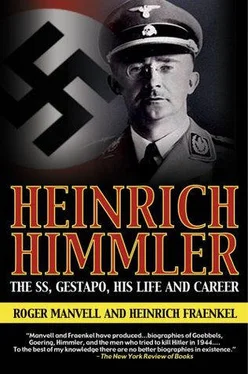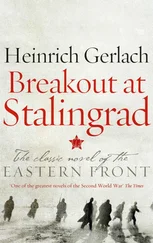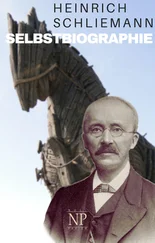‘Can’t you rid us of our commander’, begged General Heinz Lammerding, Himmler’s Chief-of-Staff.
This was what Guderian was determined to do. He drove straight to Hohenlychen, where he was surprised to find Himmler ‘apparently in robust health’, apart from a cold in the head. Guderian pointed out to him that he was obviously overworked as Reichsführer S.S., Head of the Reich Police, Minister of the Interior, Commander-in-Chief of the Replacement Army and Commander of the Army Group Vistula. Also, ‘he must have realized by now that a command of troops at the front is no easy matter’. He ought at least to give up his command in the east. Himmler hesitated.
‘I can’t go and say that to the Führer’, he said. ‘He wouldn’t approve of my making such a suggestion.’ Guderian saw his chance. ‘Then will you authorize me to say it for you?’ he demanded. 30
Himmler had to agree, and so lost his command on 20 March. According to Guderian, one of the principal reasons he had retained it, apart from ambition for office, was a desire to win for himself a Knight’s Cross.
‘He completely underestimated the qualities that are necessary for a man to be a successful commander of troops. On the very first occasion when he had to undertake a task before the eyes of all the world — one that could not be carried out by means of backstairs intrigues and fishing in troubled waters — the man inevitably proved a failure. It was complete irresponsibility on his part to wish to hold such an appointment; it was equally irresponsible of Hitler to entrust him with it.’
Guderian had by now enjoyed the opportunity closely to observe Himmler’s character. He describes him as ‘the most impenetrable of all Hitler’s disciples’. He seemed ‘an inconspicuous man with all the marks of racial inferiority. The impression he made was one of simplicity. He went out of his way to be polite. In contrast to Goring, his private life might be described as positively spartan in its austerity.’ Yet he also seemed ‘like a man from some other planet’. His imagination was ‘vivid, and even fantastic … His attempt to educate the German people in National Socialism resulted only in the concentration camps.’ But Guderian sees fit to add that ‘the way the concentration camp methods were kept secret can only be described as masterly’.
The mask of resolution which Himmler chose to wear for the particular benefit of Hitler and the S.S. was dropped to a varying degree when he was faced by men equally determined to stop the war and save what life could be preserved before the final catastrophe. The concentration camps of the east were gradually falling into enemy hands, and Himmler was deeply disturbed by the conditions which the camps inside Germany would reveal should the Allied armies liberate them. Once the desperate task of stemming the Russian advance was removed from his hands by Guderian’s intervention, all that was left for him to do in his semi-retirement was to redeem his own personal situation as best he could. It was now that he came more fully under the influence of the peacemakers — Schellenberg, Kersten and the Swedish Count Bernadotte.
Bernadotte has left his own account of his dealings with Himmler from February to April 1945. He acted as a purely private ambassador on behalf of the International Red Cross. In his book The Fall of the Curtain he pays tribute to the devious Schellenberg, but never once makes reference to Kersten. 31Bernadotte was Vice-President of the Swedish Red Cross and he had the distinction of being a relative of the King of Sweden. According to his own statement, he was anxious to intervene largely to rescue from the holocaust of Germany several thousand Scandinavian prisoners of war and a group of Scandinavian women who, although German by marriage, had been widowed during the war and wanted desperately to return to their native lands. Bernadotte was led, either through vanity or illusion, to represent himself in the light of a great saviour and peace-maker fearlessly challenging the leaders of Nazi Germany, and more especially Himmler. That he failed altogether to acknowledge the groundwork achieved in earlier and more difficult times by Kersten is a deliberate omission, and throws some suspicion on his assessment of his personal achievements during the last weeks of the regime.
Kersten, as we have seen, had managed to move his family to Stockholm in September 1943, and, once there, had inspired the tentative peace discussions which Schellenberg had undertaken with Abram Stevens Hewitt, Roosevelt’s special representative who was on a visit to Stockholm. He also initiated the first stage of the plan to evacuate Swedes and other Scandinavians who were prisoners of war from German-occupied territory, a plan on which he worked with the Swedish Foreign Minister, Christian Günther. Kersten was also working for the release of Dutch, French and Jewish prisoners. Moving constantly between Sweden and Germany, Kersten had worked on Himmler’s conscience with the same assiduous care with which he massaged his body. The initial proposal was that while neutral Swedes might be released, the Norwegian and Danish men and women in the concentration camps should be sent for internment in Sweden.
During the summer of 1944, Kersten had managed to persuade Himmler to consider placing the Scandinavian prisoners in camps where they would be free from the worst bombing and could receive help from the Swedish Red Cross. He also joined with Madame Immfeld to urge the release of 20,000 Jews for internment by the Swiss. In December, when Kersten was attending Himmler on his train in the Black Forest, the Reichsführer had gone further and agreed to release 1,000 Dutch women, together with Norwegian and Danish women and children and certain male prisoners, provided Sweden would organize the transport. He also agreed to transfer to Switzerland 800 French women, 400 Belgians, 500 Polish women and between 2,000 and 3,000 Jews. Before his return to Stockholm on 22 December, Kersten had written a letter confirming the arrangement and explaining that he had discussed the details with Kaltenbrunner in Berlin. He had also implored Himmler to release the Jewish prisoners to the Swiss.
As we have seen, Himmler had begun to transfer some groups of Jews to Switzerland when further evacuations were stopped by Hitler’s orders on 6 February. Before this, Himmler had even been negotiating with the Swiss for placing the concentration camps under International Red Cross inspection; Red Cross officials had visited Oranienburg on 2 February. But Hitler’s anger was always too much for Himmler; he collapsed like a spent balloon. After the fright he had received on 6 February, he retreated to Hohenlychen as the most peaceful place from which to conduct the military campaign in the east, which at that time was still nominally in his hands.
At Hohenlychen he received a number of important guests. On 14 February, the day after Himmler’s humiliation by Guderian in front of the Führer in Berlin, Goebbels arrived in Hohenlychen, having driven through the columns of German refugees from the east in order to visit the Reichsführer who, he gathered, was ill with tonsillitis. Semmler, Goebbels’s aide records Goebbels’s private remarks during this period about the man who seemed nearest to him now among the Nazi leaders.
‘Goebbels obviously disliked Himmler, although in their work they get along together… But Himmler’s extreme radical point of view and his use of brutal methods to get his own way make him attractive to Goebbels. Sometimes he thinks of the head of the S.S. as a rival… Goebbels would have liked the job of Minister of the Interior… But Himmler got in first, and since then he has felt prickings of jealousy… Except Hitler, no one is entirely without a secret fear of Himmler. Goebbels considers that Himmler has built up the greatest power organization that one can imagine.’ 32
Читать дальше











